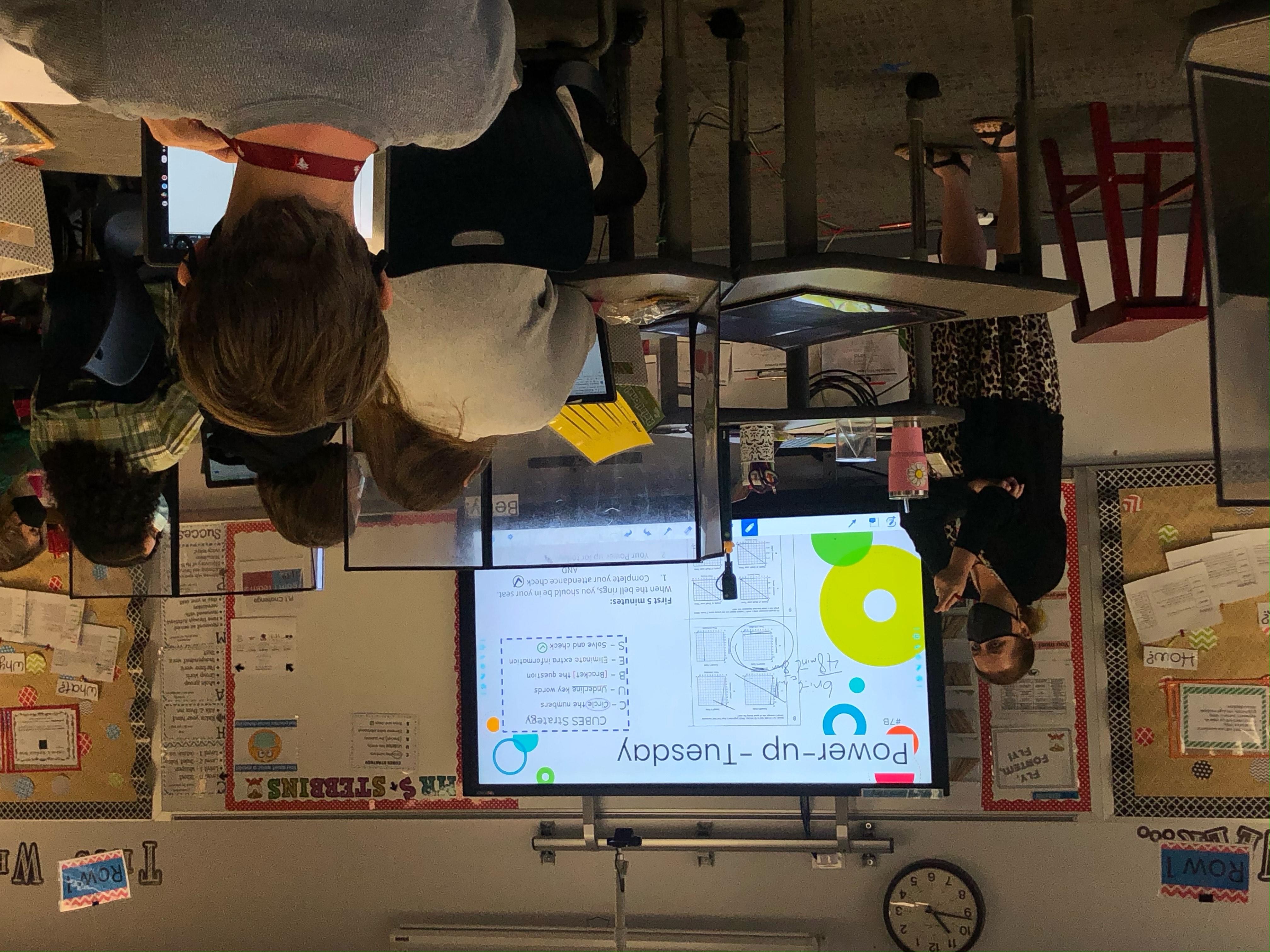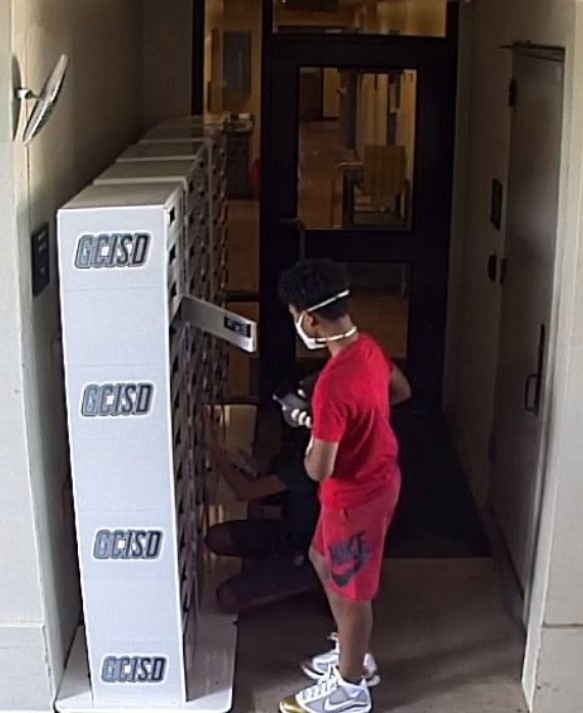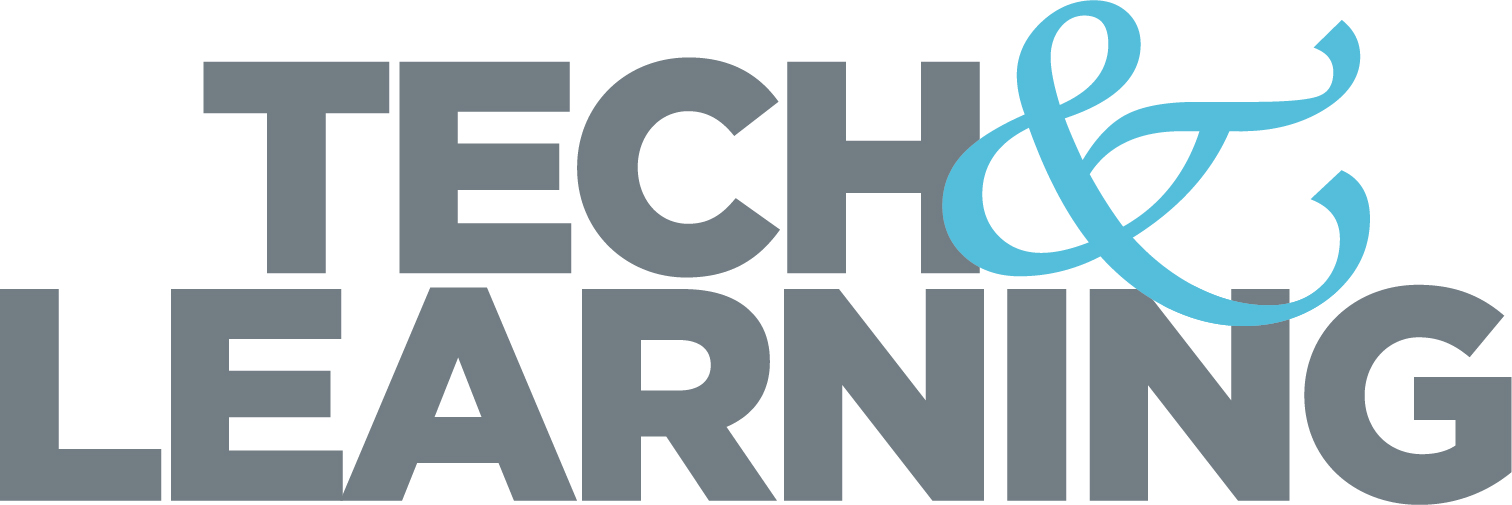One District’s Ongoing Hybrid Success
Early in the pandemic, Kyle Berger, chief technology officer for Grapevine-Colleyville Independent School District, installed cameras in every classroom for hybrid learning. Those cameras continue to be used in innovative ways.

Many districts scrapped hybrid teaching after the first year of the pandemic, but it continues to be a success at the Grapevine-Colleyville Independent School District in Texas, and is being kept for select use going forward.
The success of hybrid teaching is thanks in large part to the leadership of Kyle Berger, the district’s chief technology officer. Berger recognized that for hybrid teaching to be successful that high-quality audio and visual were needed, and all the tech had to be easy to use for teachers who already had a lot on their plates.
For these and other innovations, Berger was recognized with a Tech & Learning Innovative Leader Award for Best Overall Implementation of Technology at the recent Tech & Learning Leadership Summit in Dallas.
How Berger’s district employs effective hybrid teaching and continues to use in-class cameras can provide a blueprint for other districts.
Nominate someone for the Tech & Learning Innovative Leader Award here
Cameras and Audio

Berger recognized early on that standard laptop or computer cameras would not work for teachers who would be addressing both in-person students and those participating virtually. He mounted webcams to the ceiling of each classroom, about six feet back from the board, so it would capture both the teacher and what they put on the board. The camera hung down from the ceiling to create a natural shot. “I wanted to capture the teacher at more of an eye level, so it didn't look like a security camera view,” he says.
He and his team debated about providing teachers with mics but found that the webcams he used were sufficient to clearly capture what the teacher and students were saying. The whole setup was easy for teachers to operate, and was quick and inexpensive to install.
Tech & Learning Newsletter
Tools and ideas to transform education. Sign up below.
“I could outfit a room with this in less than 10 minutes, at a cost of under $400,” Berger says.
The Future of Hybrid Classrooms

With the vast majority of students now attending in-person classes full-time, Berger removed cameras from a few classrooms, but more than 90 percent of the devices have stayed in place. The district is looking at scheduling future hybrid classes to provide more flexibility for students who do not always want to attend in person.
In the meantime, the cameras continue to be utilized in a variety of ways, including:
- For students who are out of school with COVID or for other medical reasons to keep participating in class.
- To allow a teacher to quickly record an explanation or lesson so students can access it later. “The way they're mounted on the ceiling, the teachers started taking that to a different level because you could reach up to the webcam if you wanted to and you could turn it to point down, and now in a sense, it's a document camera,” Berger says.
- To help with the substitute teacher shortage. “We can bridge two classrooms together through our video solutions, and maybe just have an instructional aide in the second classroom,” Berger says.
- To allow educators to engage in professional development by watching videos of their own lectures and lessons.
“It's really allowed us a lot more flexibility to continue to navigate the ever-changing environment and education right now,” Berger says.
Getting Students Connected

The best-in-class camera and audio in the world doesn’t matter if virtual students can’t get online, so during the pandemic, Berger got innovative in the way he helped students stay connected. Prior to March 2020, Grapevine-Colleyville ISD had been a one-to-one district and had made serious efforts to close the digital divide. However, during the pandemic, the district upped its support for these devices by using technology lockers outside of schools.
“So a student at home can put in our helpdesk system, ‘My laptop isn't working,’” Berger says. “They would get a note back saying, ‘Locker A1 has your replacement device in it. Here's the combination. It's available 24/7, you can go up there at any time.’”
Even with social distancing no longer vital, the district continues to use the lockers for convenience. “For us, it's a great tool because sometimes mom and dad don't have time during working hours to come and pick up something for their kids. Now it doesn't matter, you can come any time of the day to pick up that device,” he says.
Berger has also begun hosting monthly events to teach parents about technology in general, not just as it relates to school. “We live in it every day, but a lot of parents don't,” he says. “So we can help educate them on all the different things that are happening and all the scary apps on the phones that they might need to watch out for their kids.”
It’s all part of Berger’s ongoing efforts to keep innovating. Berger’s mom was an educator and his dad was an IT professional in the corporate world, so he combined his parents’ passions when he became a CTO more than 20 years ago. He’s constantly asking “What’s next?” and looking for ways for his district to grow. “I continue to push forward to try to continue to redefine education, not only for my students but for my community as well,” he says.
Erik Ofgang is a Tech & Learning contributor. A journalist, author and educator, his work has appeared in The New York Times, the Washington Post, the Smithsonian, The Atlantic, and Associated Press. He currently teaches at Western Connecticut State University’s MFA program. While a staff writer at Connecticut Magazine he won a Society of Professional Journalism Award for his education reporting. He is interested in how humans learn and how technology can make that more effective.










